Cover�
Chapter 1 -- A Quick Start�
1.1 Introduction�
1.1.1 Spacing and Comments�
1.1.2 Preprocessor Directives�
1.1.3 The Main Function�
1.1.4 The read_column_numbers Function�
1.2 Other Capabilities�
1.3 Compiling�
1.4 Summary�
1.5 Summary of Cautions�
1.6 Summary of Programming Tips�
1.7 Questions�
1.8 Programming Exercises�
Chapter 2 -- Basic Concepts�
2.1 Environments�
2.1.1 Translation�
Filename Conventions�
Compiling and Linking�
2.1.2 Execution�
2.2 Lexical Rules�
2.2.1 Characters�
2.2.2 Comments�
2.2.3 Free Form Source Code�
2.2.4 Identifiers�
2.2.5 Form of a Program�
2.3 Program Style�
2.4 Summary�
2.5 Summary of Cautions�
2.6 Summary of Programming Tips�
2.7 Questions�
2.8 Programming Exercises�
Chapter 3 -- Data�
3.1 Basic Data Types�
3.1.1 The Integer Family�
Integer Literals�
Enumerated Type�
3.1.2 Floating-Pint Types�
3.1.3 Pointers�
Pointer Constants�
String Literals�
3.2 Basic Declarations�
3.2.1 Initialization�
3.2.2 Declaring Simple Arrays�
3.2.3 Declaring Pointers�
3.2.4 Implicit Declarations�
3.3 Typedef�
3.4 Constants�
3.5 Scope�
3.5.1 Block Scope�
3.5.2 File Scope�
3.5.3 Prototype Scope�
3.5.4 Function Scope�
3.6 Linkage�
3.7 Storage Class�
3.7.1 Initialization�
3.8 The Static Keyword�
3.9 Scope, Linkage, and Storage Class Example�
3.10 Summary�
3.11 Summary of Cautions�
3.12 Summary of Programming Tips�
3.13 Questions�
Chapter 4 -- Statements�
4.1 Empty Statement�
4.2 Expression Statement�
4.3 Statement Blocks�
4.4 If Statement�
4.5 While Statement�
4.5.1 Break and Continue Statements�
4.5.2 Execution of the While�
4.6 For Statement�
4.6.1 Execution of a For�
4.7 Do statement�
4.8 Switch Statement�
4.8.1 break in a switch�
4.8.2 Defaults�
4.8.3 Execution of the Switch�
4.9 Goto Statement�
4.10 Summary�
4.11 Summary of Cautions�
4.12 Summary of Programming Tips�
4.13 Questions�
4.14 Programming Exercises�
Chapter 5 -- Operators and Expressions�
5.1 Operators�
5.1.1 Arithmetic�
5.1.2 Shifting�
5.1.3 Bitwise�
Bit Manipulation�
5.1.4 Assignment�
Compound Assignment�
5.1.5 Unary�
5.1.6 Relational�
5.1.7 Logical�
5.1.8 Conditional�
5.1.9 Comma�
5.1.10 Subscript, Function Call, and Structure Member�
5.2 Boolean Values�
5.3 L-values and R-values�
5.4 Expression Evaluation�
5.4.1 Implicit Type Conversions�
5.4.2 Arithmetic Conversions�
5.4.3 Properties of Operators�
5.4.4 Precedence and Order of Evaluation�
5.5 Summary�
5.6 Summary of Cautions�
5.7 Summary of Programming Tips�
5.8 Summary�
5.9 Programming Exercises�
Chapter 6 -- Pointers�
6.1 Memory and Addresses�
6.1.1 Address Versus Contents�
6.2 Values and Their Types�
6.3 Contents of a Pointer Variable�
6.4 Indirection Operator�
6.5 Uninitialized and Illegal Pointer�
6.6 The Null Pointer�
6.7 Pointers, Indirection, and L-values�
6.8 Pointers, Indirection, and Variables�
6.9 Pointer Constants�
6.10 Pointers to Pointers�
6.11 Pointer Expressions�
6.12 Examples�
6.13 Pointer Arithmetic�
6.13.1 Arithmetic Operations�
6.13.2 Relational Operations�
6.14 Summary�
6.15 Summary of Cautions�
6.16 Summary of Programming Tips�
6.17 Questions�
6.18 Programming Exercises�
Chapter 7 -- Functions�
7.1 Function Definition�
7.1.1 Return Statement�
7.2 Function Declaration�
7.2.1 Prototypes�
7.2.2 Default Function Assumptions�
7.3 Function Arguments�
7.4 ADTs and Black Boxes�
7.5 Recursion�
7.5.1 Tracing a Recursive Function�
7.5.2 Recursion versus Iteration�
7.6 Variable Argument Lists�
7.6.1 The stdarg Macros�
7.6.2 Limitations of Variable Arguments�
7.7 Summary�
7.8 Summary of Cautions�
7.9 Summary of Programming Tips�
7.10 Questions�
7.11 Programming Exercises�
Chapter 8 -- Arrays�
8.1 One-Dimensional Arrays�
8.1.1 Array Names�
8.1.2 Subscripts�
8.1.3 Pointers versus Subscripts�
8.1.4 Pointer Efficiency�
Switching to Pointers�
Bringing Back the Counter�
Register Pointer Variables�
Eliminating the Counter�
Conclusions�
8.1.5 Arrays and Pointers�
8.1.6 Array Names as Function Arguments�
8.1.7 Declaring Array Parameters�
8.1.8 Initialization�
Static and Automatic Initialization�
8.1.9 Incomplete Initialization�
8.1.10 Automatic Array Sizing�
8.1.11 Character Array Initialization�
8.2 Multidimensional Arrays�
8.2.1 Storage Order�
8.2.2 Array Names�
8.2.3 Subscripts�
8.2.4 Pointers to Arrays�
8.2.5 Multidimensional Arrays as Function Arguments�
8.2.6 Initialization�
8.2.7 Automatic Array Sizing�
8.3 Arrays of Pointers�
8.4 Summary�
8.5 Summary of Cautions�
8.6 Summary of Programming Tips�
8.7 Questions�
8.8 Programming Exercises�
Chapter 9 -- Strings, Characters, and Bytes�
9.1 String Basics�
9.2 String Length�
9.3 Unrestricted String Functions�
9.3.1 Copying Strings�
9.3.2 Concatenating Strings�
9.3.3 Function Return Value�
9.3.4 String Comparisons�
9.4 Length-Restricted String Functions�
9.5 Basic String Searching�
9.5.1 Finding a Character�
9.5.2 Finding Any of Several Characters�
9.5.3 Finding a Substring�
9.6 Advanced String Searching�
9.6.1 Finding String Prefixes�
9.6.2 Finding Tokens�
9.7 Error Messages�
9.8 Character Operations�
9.8.1 Character Classification�
9.8.2 Character Transformation�
9.9 Memory Operations�
9.10 Summary�
9.11 Summary of Cautions�
9.12 Summary of Programming Tips�
9.13 Questions�
9.14 Programming Exercises�
Chapter 10 -- Structures and Unions�
10.1 Structure Basics�
10.1.1 Structure Declarations�
10.1.2 Structure Members�
10.1.3 Direct Member Access�
10.1.4 Indirect Member Access�
10.1.5 Self-Referential Structures�
10.1.6 Incomplete Declarations�
10.1.7 Initializing Structures�
10.2 Structures, Pointers, and Members�
10.2.1 Accessing the Pointer�
10.2.2 Accessing the Structure�
10.2.3 Accessing Structure Members�
10.2.4 Accessing a Nested Structure�
10.2.5 Accessing a Pointer Member�
10.3 Structure Storage Allocation�
10.4 Structures as Function Arguments�
10.5 Bit Fields�
10.6 Unions�
10.6.1 Variant Records�
10.6.2 Initializing Unions�
10.7 Summary�
10.8 Summary of Cautions�
10.9 Summary of Programming Tips�
10.10 Questions�
10.11 Programming Exercises�
Chapter 11 -- Dynamic Memory Allocation�
11.1 Why Use Dynamic Allocation�
11.2 Malloc and Free�
11.3 Calloc and Realloc�
11.4 Using Dynamically Allocated Memory�
11.5 Common Dynamic Memory Errors�
11.5.1 Memory Leaks�
11.6 Memory Allocation Examples�
11.7 Summary�
11.8 Summary of Cautions�
11.9 Summary of Programming Tips�
11.10 Questions�
11.11 Programming Exercises�
Chapter 12 -- Using Structures and Pointers�
12.1 Linked Lists�
12.2 Singly Linked Lists�
12.2.1 Inserting into a Singly Linked List�
Debugging the Insert Function�
Optimizing the Insert Function�
12.2.2 Other List Operations�
12.3 Doubly Linked Lists�
12.3.1 Inserting into a Doubly Linked List�
Simplifying the Insert Function�
12.3.2 Other List Operations�
12.4 Summary�
12.5 Summary of Cautions�
12.6 Summary of Programming Tips�
12.7 Questions�
12.8 Programming Exercises�
Chapter 13 -- Advanced Pointers Topics�
13.1 More Pointers to Pointers�
13.2 Advanced Declarations�
13.3 Pointers to Functions�
13.3.1 Callback Functions�
13.3.2 Jump Tables�
13.4 Command Line Arguments�
13.4.1 Passing Command Line Arguments�
13.4.2 Processing Command Line Arguments�
13.5 String Literals�
13.6 Summary�
13.7 Summary of Cautions�
13.8 Summary of Programming Tips�
13.9 Questions�
13.10 Programming Exercises�
Chapter 14 -- The Preprocessor�
14.1 Predefined Symbols�
14.2 #define�
14.2.1 Macros�
14.2.2 #define Substitution�
14.2.3 Macros versus Functions�
14.2.4 Macro Arguments with Side Effects�
14.2.5 Naming Conventions�
14.2.6 #undef�
14.2.7 Command Line Definitions�
14.3 Conditional Compilation�
14.3.1 If Defined�
14.3.2 Nested Directives�
14.4 File Inclusion�
14.4.1 Library Includes�
14.4.2 Local Includes�
14.4.3 Nested File Inclusion�
14.5 Other Directives�
14.6 Summary�
14.7 Summary of Cautions�
14.8 Summary of Programming Tips�
14.9 Questions�
14.10 Programming Exercises�
Chapter 15 -- Input/Output Functions�
15.1 Error Reporting�
15.2 Terminating Execution�
15.3 The Standard I/O Library�
15.4 ANSI I/O Concepts�
15.4.1 Streams�
Text Streams�
Binary Streams�
15.4.2 FILEs�
15.4.3 Standard I/O Constants�
15.5 Overview of Stream I/O�
15.6 Opening Streams�
15.7 Closing Streams�
15.8 Character I/O�
15.8.1 Character I/O Macros�
15.8.2 Undoing Character I/O�
15.9 Unformatted Line I/O�
15.10 Formatted Line I/O�
15.10.1 The scanf Family�
15.10.2 scanf Format Codes�
15.10.3 The printf Family�
15.10.4 printf Format Codes�
15.11 Binary I/O�
15.12 Flushing and Seeking Functions�
15.13 Changing the Buffering�
15.14 Stream Error Functions�
15.15 Temporary Files�
15.16 File Manipulation Functions�
15.17 Summary�
15.18 Summary of Cautions�
15.19 Summary of Programming Tips�
15.20 Questions�
15.21 Programming Exercises�
Chapter 16 -- Standard Library�
16.1 Integer Functions�
16.1.1 Arithmetic �
16.1.2 Random Numbers �
16.1.3 String Conversion �
16.2 Floating-Point Functions�
16.2.1 Trigonometry �
16.2.2 Hyperbolic �
16.2.3 Logarithm and Exponent �
16.2.4 Floating-point Representation �
16.2.5 Power �
16.2.6 Floor, Ceiling, Absolute Value, and Remainder �
16.2.7 String Conversion �
16.3 Date and Time Functions�
16.3.1 Processor Time �
16.3.2 Time of Day �
Date and Time Conversions �
16.4 Nonlocal Jumps �
16.4.1 Example�
16.4.2 When to Use Nonlocal Jumps�
16.5 Signals�
16.5.1 Signal Names �
16.5.2 Processing Signals �
16.5.3 Signal Handlers�
Volatile Data�
Returning From a Handler�
16.6 Printing Variable Argument Lists �
16.7 Execution Environment�
16.7.1 Terminating Execution �
16.7.3 The Environment �
16.7.4 Executing System Commands �
16.8 Sorting and Searching �
16.9 Locales�
16.9.1 Numeric and Monetary Formatting �
Numeric Formatting�
Monetary Formatting�
16.9.2 Strings and Locales �
16.9.3 Effects of Changing the Locale�
16.10 Summary�
16.11 Summary of Cautions�
16.12 Summary of Programming Tips�
16.13 Questions�
16.14 Programming Exercises�
Chapter 17 -- Classic Abstract Data Types�
17.1 Memory Allocation�
17.2 Stacks�
17.2.1 Stack Interface�
17.2.2 Implementing a Stack�
An Arrayed Stack�
A Dynamically Arrayed Stack�
A Linked Stack�
17.3 Queues�
17.3.1 Queue Interface�
17.3.2 Implementing a Queue�
An Arrayed Queue�
Dynamically Arrayed and Linked Queues�
17.4 Trees�
17.4.1 Insertions into a Binary Search Tree�
17.4.2 Deletions from a Binary Search Tree�
17.4.3 Searching a Binary Search Tree�
17.4.4 Tree Traversals�
17.4.5 Binary Search Tree Interface�
17.4.6 Implementing a Binary Search Tree�
An Arrayed, Binary Search Tree�
A Linked Binary Search Tree�
Variations on the Tree Interface�
17.5 Improvements in Implementation�
17.5.1 Having More Than One Stack�
17.5.2 Having More Than One Type�
17.5.3 Name Clashes�
17.5.4 Standard Libraries of ADTs�
17.6 Summary�
17.7 Summary of Cautions�
17.8 Summary of Programming Tips�
17.9 Questions�
17.10 Programming Exercises�
Chapter 18 -- Runtime Environment�
18.1 Determining the Runtime Environment�
18.1.1 Test Program�
18.1.2 Static Variables and Initialization�
18.1.3 The Stack Frame�
18.1.4 Register Variables�
18.1.5 Length of External Identifiers�
18.1.6 Determining the Stack Frame Layout�
Passing Function Arguments�
Function Prologue�
Argument Ordering on the Stack�
Final Stack Frame Layout�
Function Epilogue�
Return Values�
18.1.7 Expression Side Effects�
18.2 Interfacing With Assembly Language�
18.3 Runtime Efficiency�
18.3.1 Improving Efficiency�
18.4 Summary�
18.5 Summary of Cautions�
18.6 Summary of Programming Tips�
18.7 Questions�
18.8 Programming Exercises�
APPENDIX -- Selected Problem Solutions�
Chapter 1 Questions�
Chapter 1 Programming Exercises�
Chapter 2 Questions�
Chapter 2 Programming Exercises�
Chapter 3 Questions�
Chapter 4 Questions�
Chapter 4 Programming Exercises�
Chapter 5 Questions�
Chapter 5 Programming Exercises�
Chapter 6 Questions�
Chapter 6 Programming Exercises�
Chapter 7 Questions�
Chapter 7 Programming Exercises�
Chapter 8 Questions�
Chapter 8 Programming Exercises�
Chapter 9 Questions�
Chapter 9 Programming Exercises�
Chapter 10 Questions�
Chapter 10 Programming Exercises�
Chapter 11 Questions�
Chapter 11 Programming Exercises�
Chapter 12 Questions�
Chapter 12 Programming Exercises�
Chapter 13 Questions�
Chapter 13 Programming Exercises�
Chapter 14 Questions�
Chapter 14 Programming Exercises�
Chapter 15 Questions�
Chapter 15 Programming Exercises�
Chapter 16 Questions�
Chapter 16 Programming Exercises�
Chapter 17 Questions�
Chapter 17 Programming Exercises�
Chapter 18 Questions�
Chapter 18 Programming Exercises�
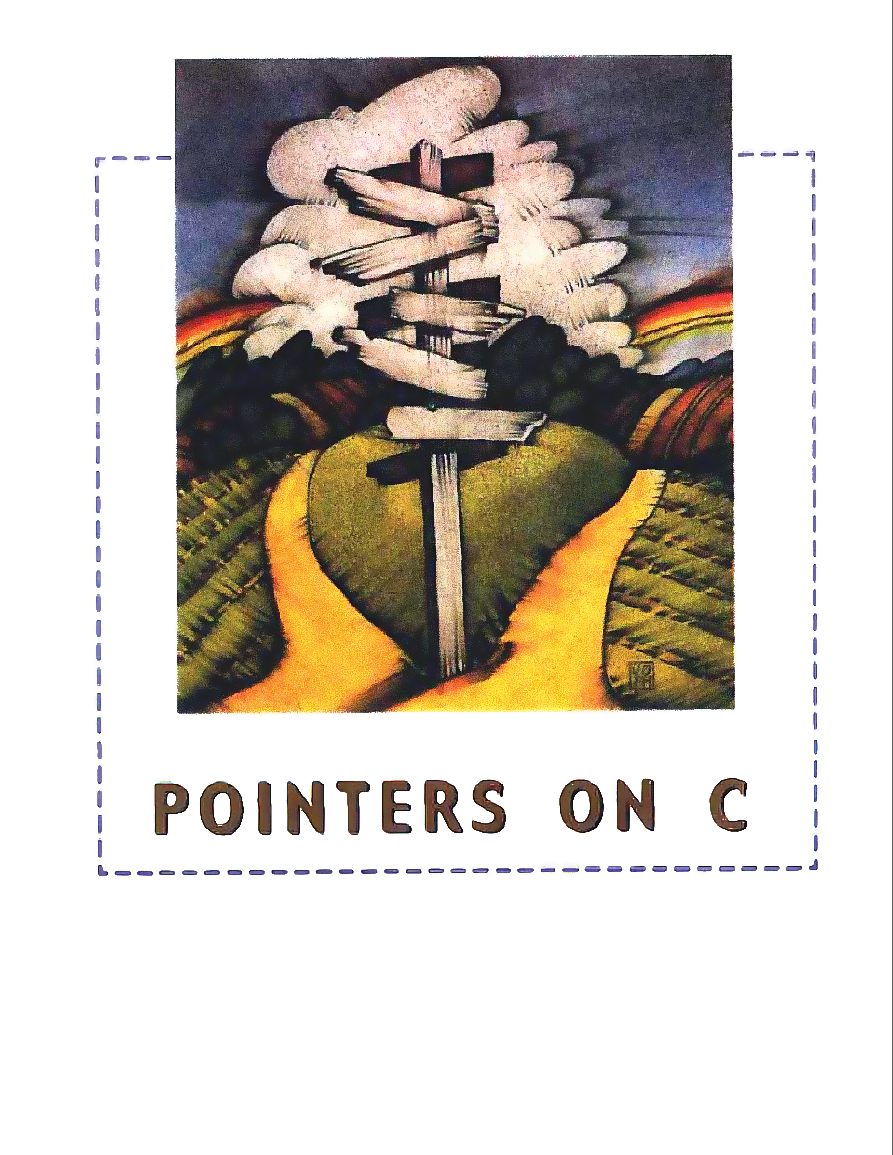
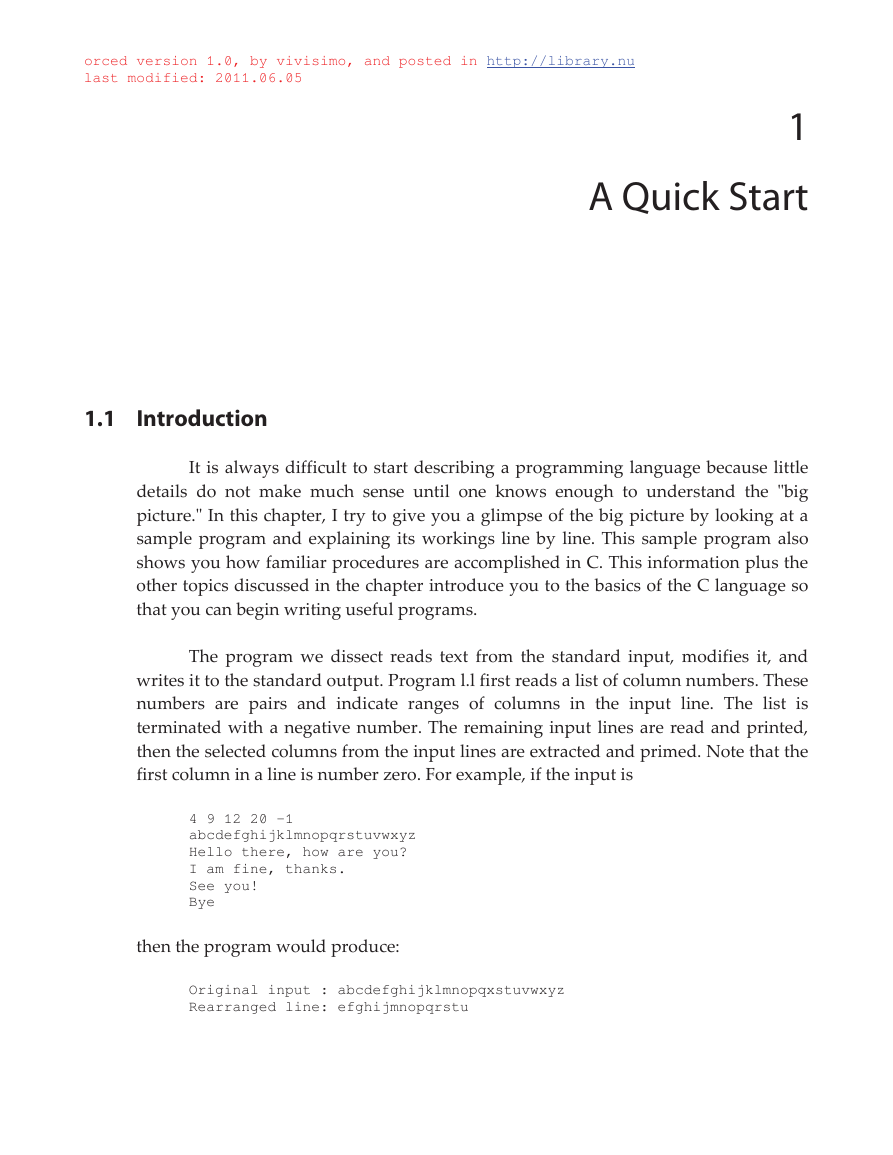
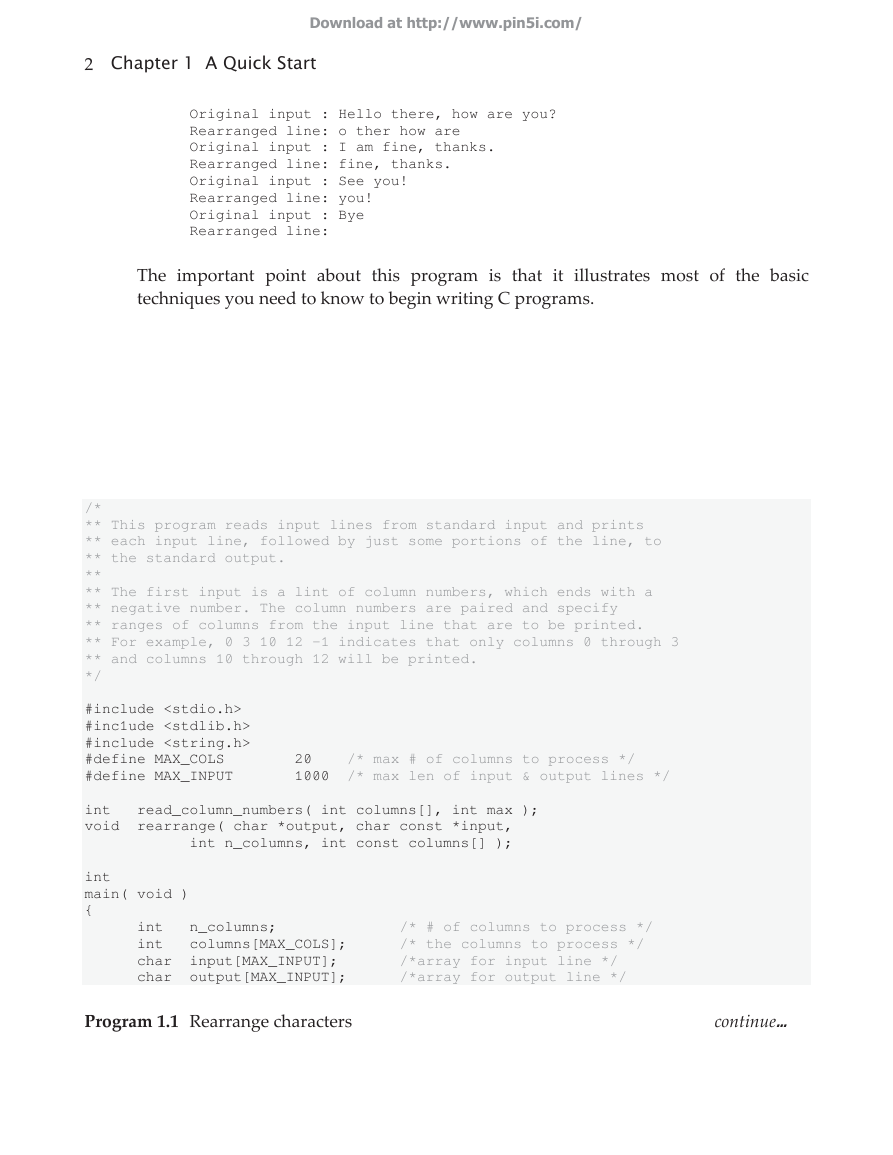
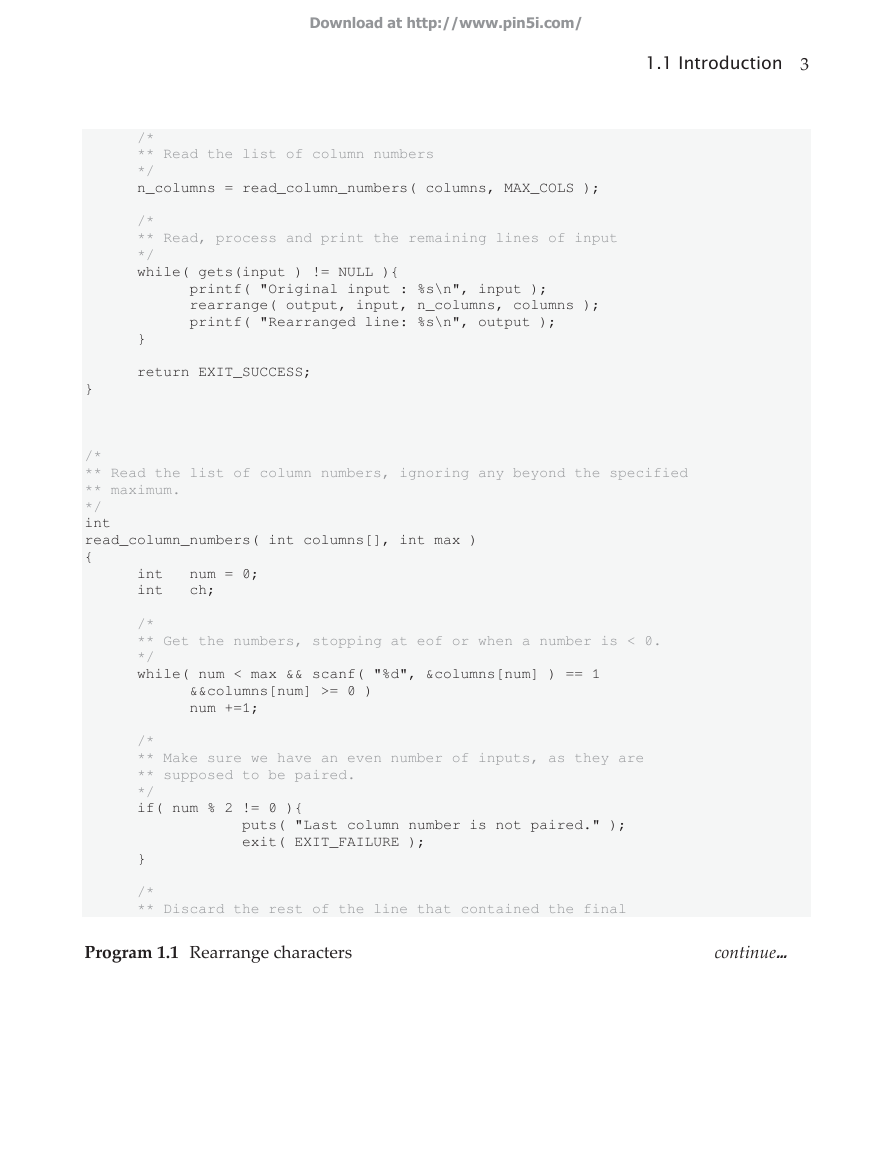
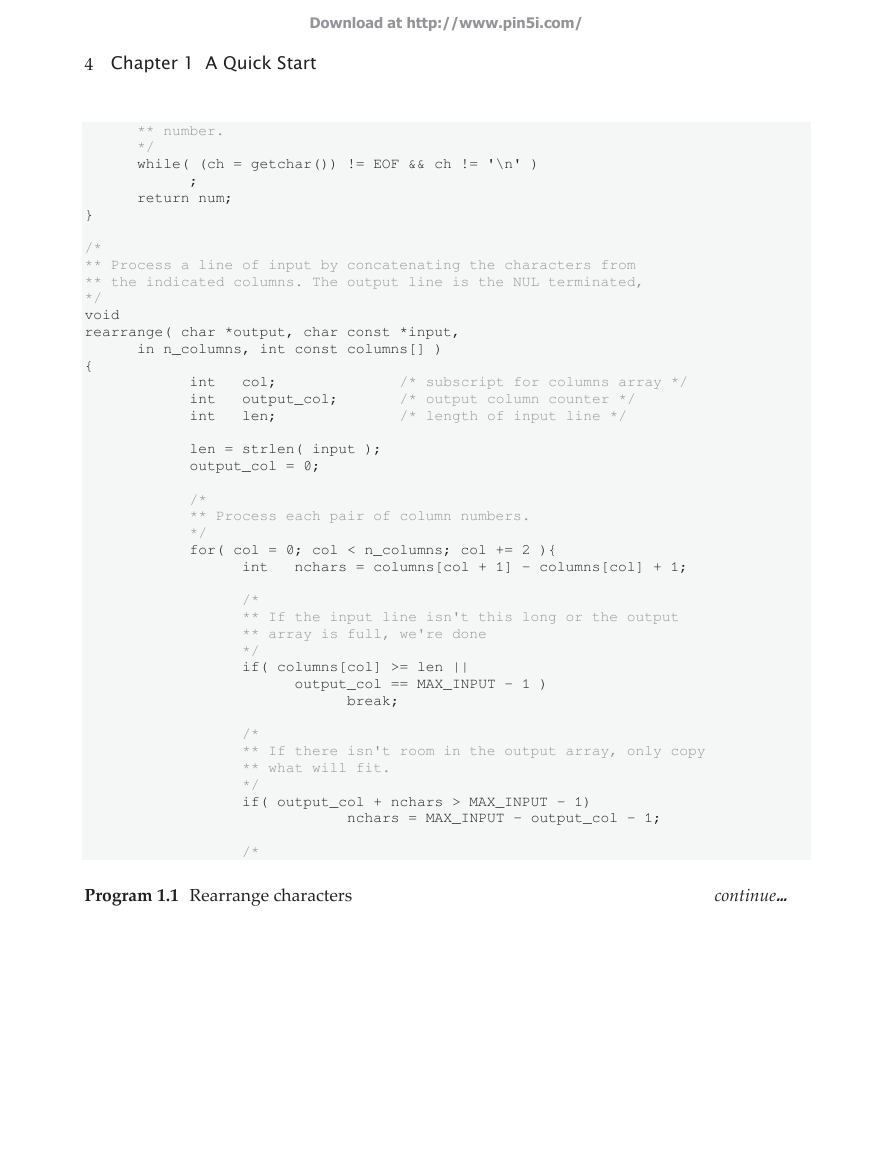
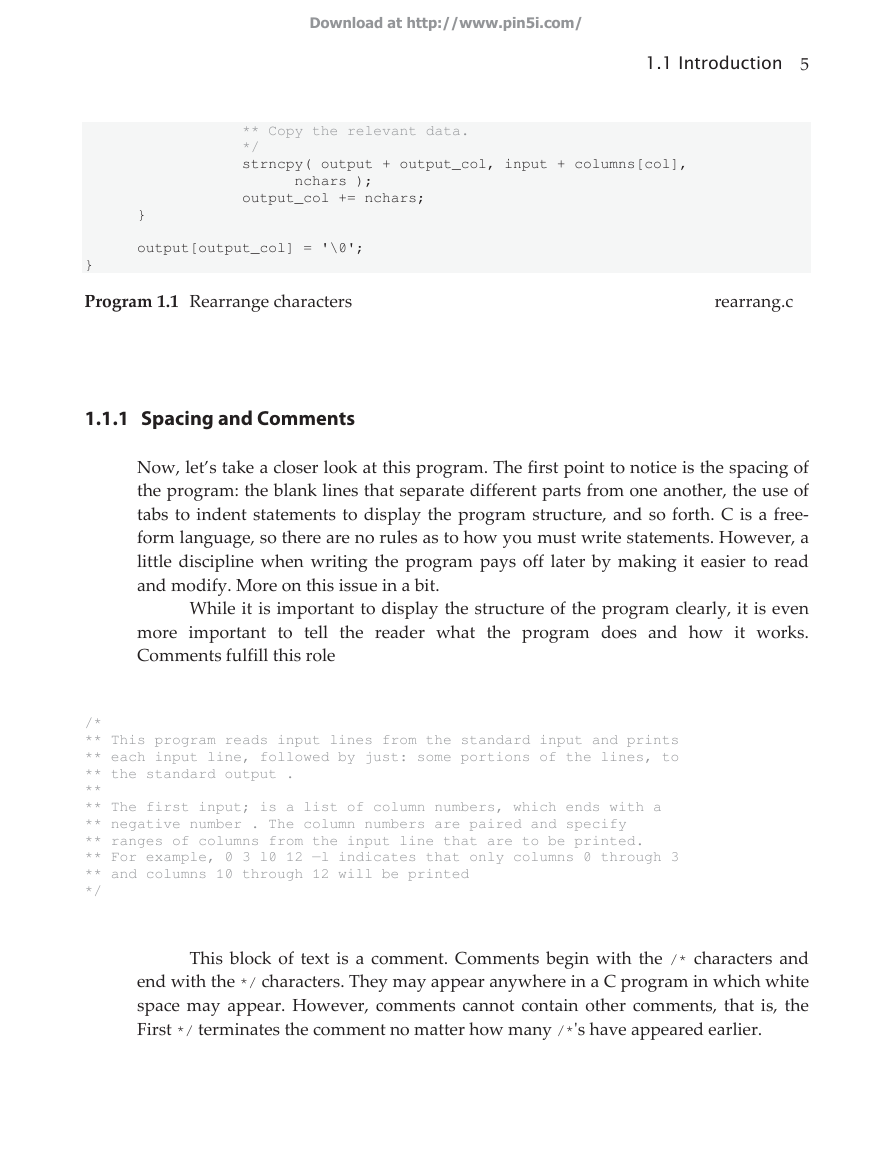
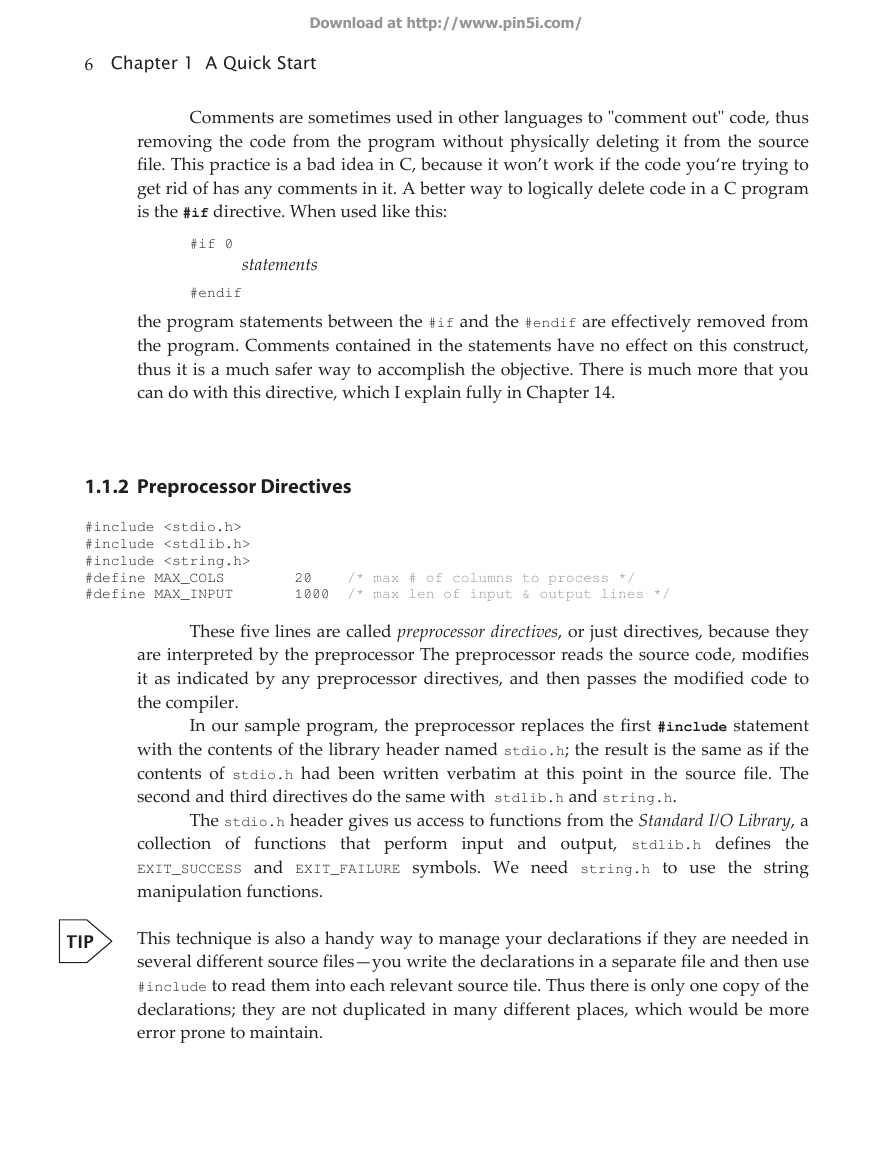
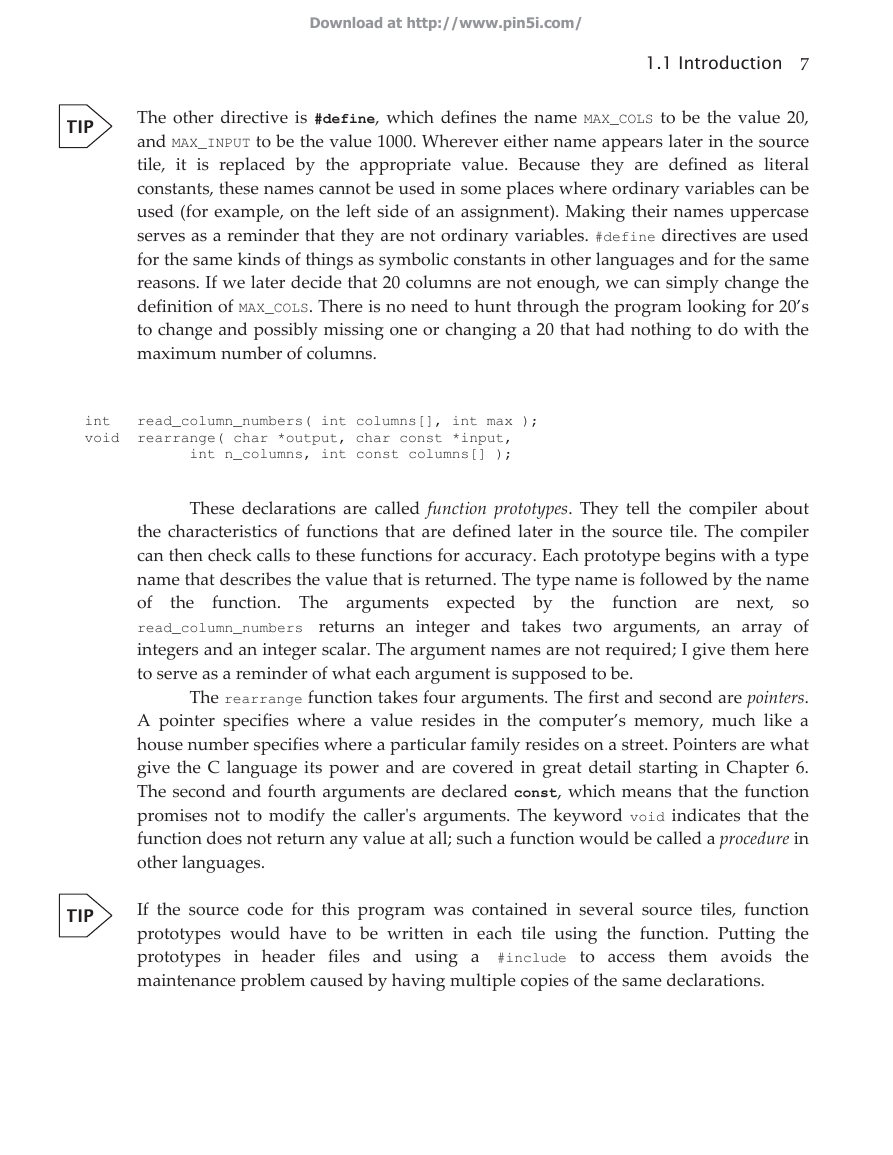








 2023年江西萍乡中考道德与法治真题及答案.doc
2023年江西萍乡中考道德与法治真题及答案.doc 2012年重庆南川中考生物真题及答案.doc
2012年重庆南川中考生物真题及答案.doc 2013年江西师范大学地理学综合及文艺理论基础考研真题.doc
2013年江西师范大学地理学综合及文艺理论基础考研真题.doc 2020年四川甘孜小升初语文真题及答案I卷.doc
2020年四川甘孜小升初语文真题及答案I卷.doc 2020年注册岩土工程师专业基础考试真题及答案.doc
2020年注册岩土工程师专业基础考试真题及答案.doc 2023-2024学年福建省厦门市九年级上学期数学月考试题及答案.doc
2023-2024学年福建省厦门市九年级上学期数学月考试题及答案.doc 2021-2022学年辽宁省沈阳市大东区九年级上学期语文期末试题及答案.doc
2021-2022学年辽宁省沈阳市大东区九年级上学期语文期末试题及答案.doc 2022-2023学年北京东城区初三第一学期物理期末试卷及答案.doc
2022-2023学年北京东城区初三第一学期物理期末试卷及答案.doc 2018上半年江西教师资格初中地理学科知识与教学能力真题及答案.doc
2018上半年江西教师资格初中地理学科知识与教学能力真题及答案.doc 2012年河北国家公务员申论考试真题及答案-省级.doc
2012年河北国家公务员申论考试真题及答案-省级.doc 2020-2021学年江苏省扬州市江都区邵樊片九年级上学期数学第一次质量检测试题及答案.doc
2020-2021学年江苏省扬州市江都区邵樊片九年级上学期数学第一次质量检测试题及答案.doc 2022下半年黑龙江教师资格证中学综合素质真题及答案.doc
2022下半年黑龙江教师资格证中学综合素质真题及答案.doc